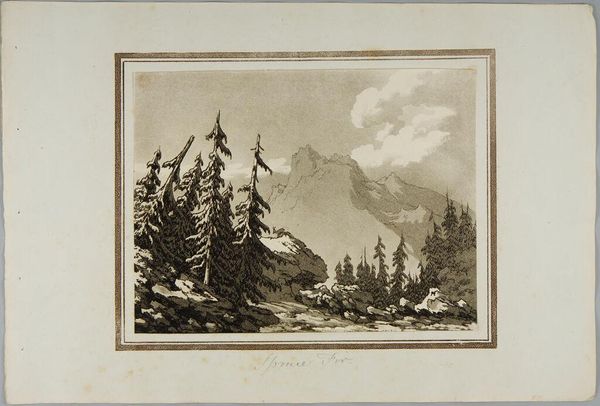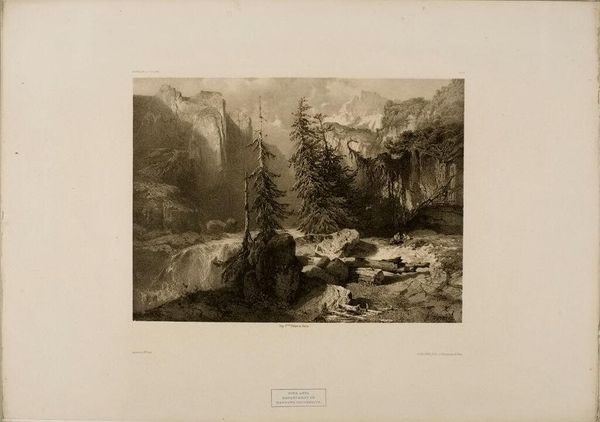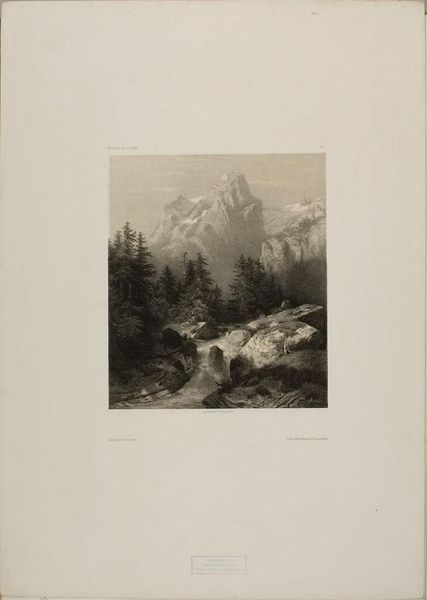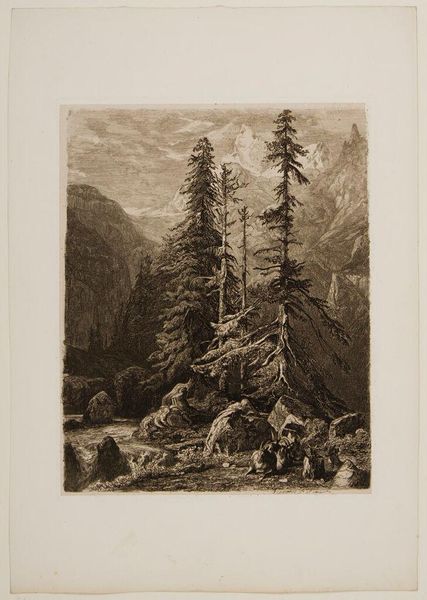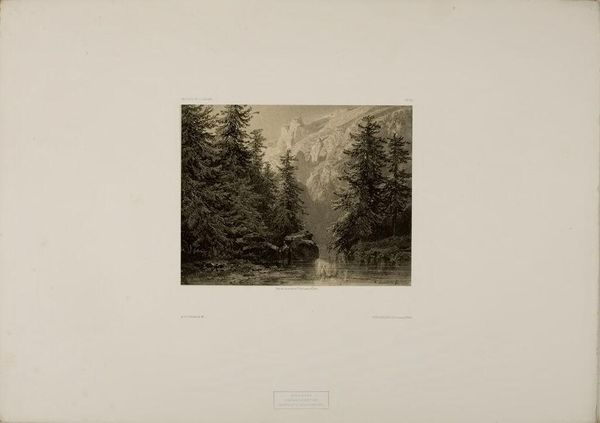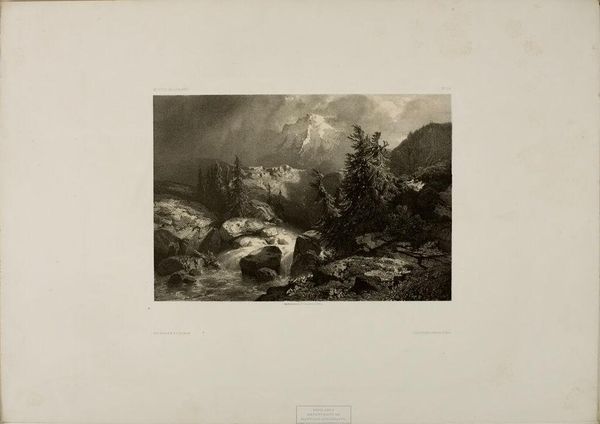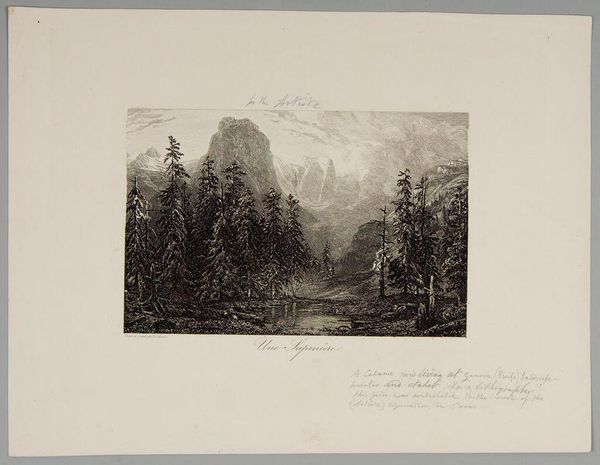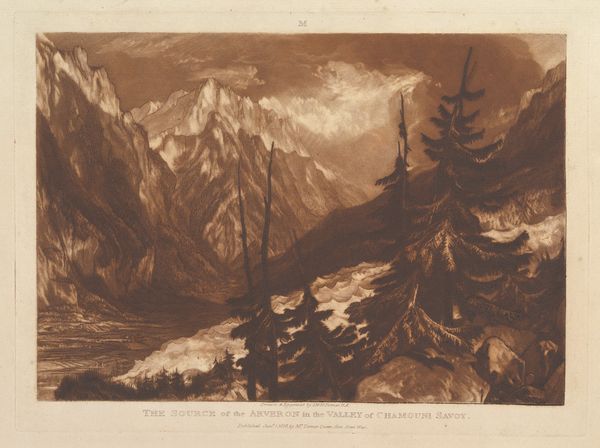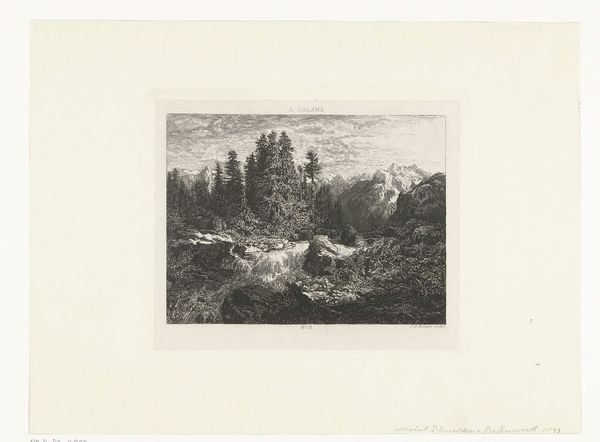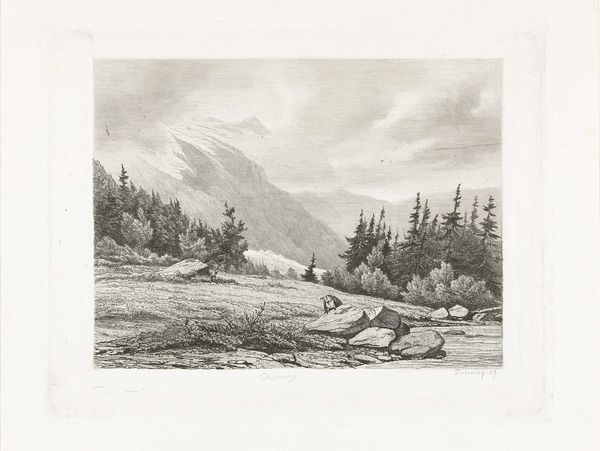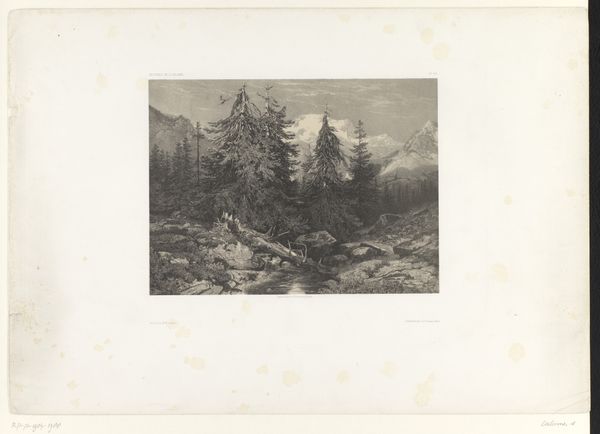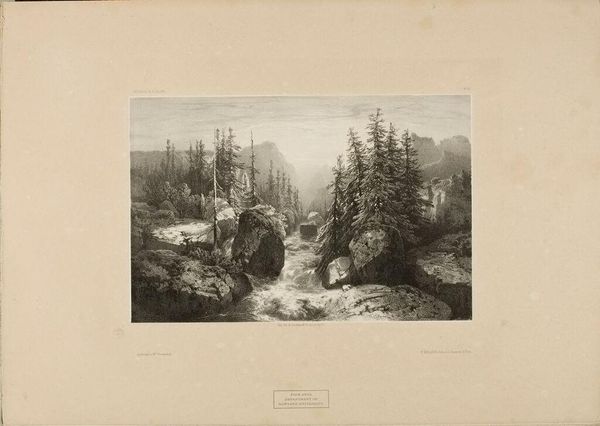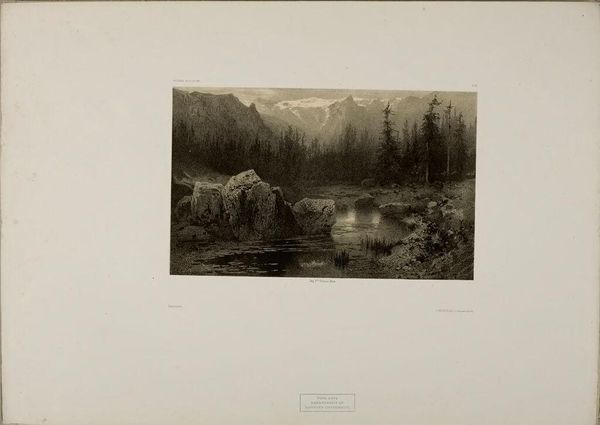
Copyright: CC0 1.0
Curator: Let's spend a moment reflecting on Alexandre Calame's Landscape Number 36, housed here at the Harvard Art Museums. Editor: It has an almost… sepia-toned dreaminess to it, doesn't it? Like a memory fading at the edges, mountains and evergreens like a half-remembered fairytale forest. Curator: Absolutely, and I think that speaks to the tradition of landscape painting at the time. Calame carefully composed this scene to emphasize the sublimity of nature, but also the role of human labor in shaping it. Editor: Human labor? I mostly see nature. Curator: Look closely at the foreground. The carefully rendered rocks and the fallen trees suggest a deliberate manipulation, a subtle imposition of order that was likely tied to emerging logging practices. Editor: Ah, a landscape being commodified, processed, and consumed. It does add a melancholy layer to what at first seems like a picturesque scene. Curator: Precisely. It reminds us that these romantic vistas were often intertwined with economic and social transformations. Editor: It is strange to see something sublime and sobering at once. Thank you for this, it has been a valuable perspective. Curator: Thank you for joining me, I learned a lot too.
Comments
No comments
Be the first to comment and join the conversation on the ultimate creative platform.
